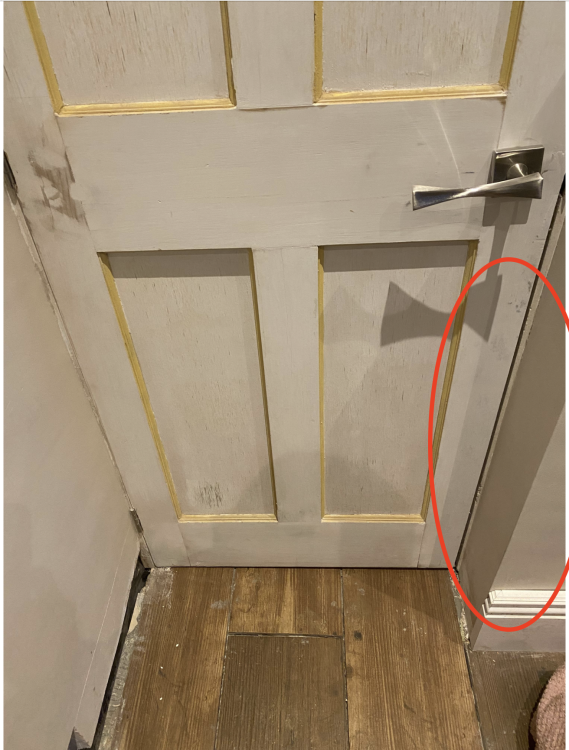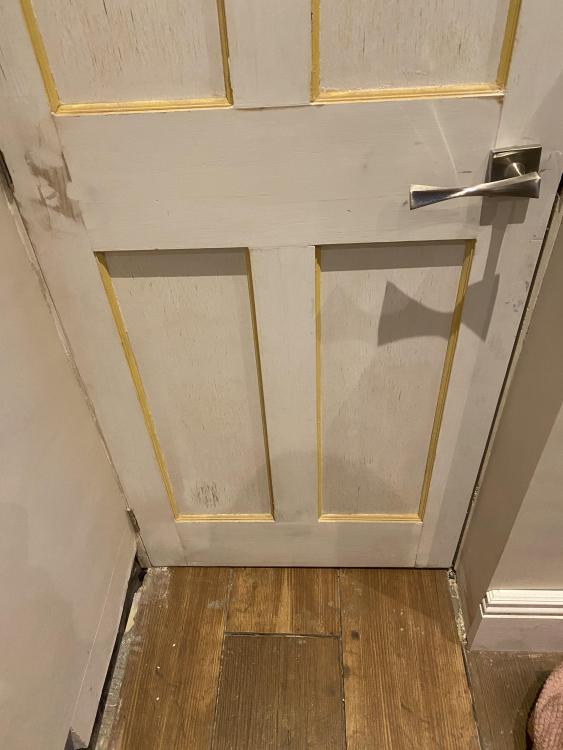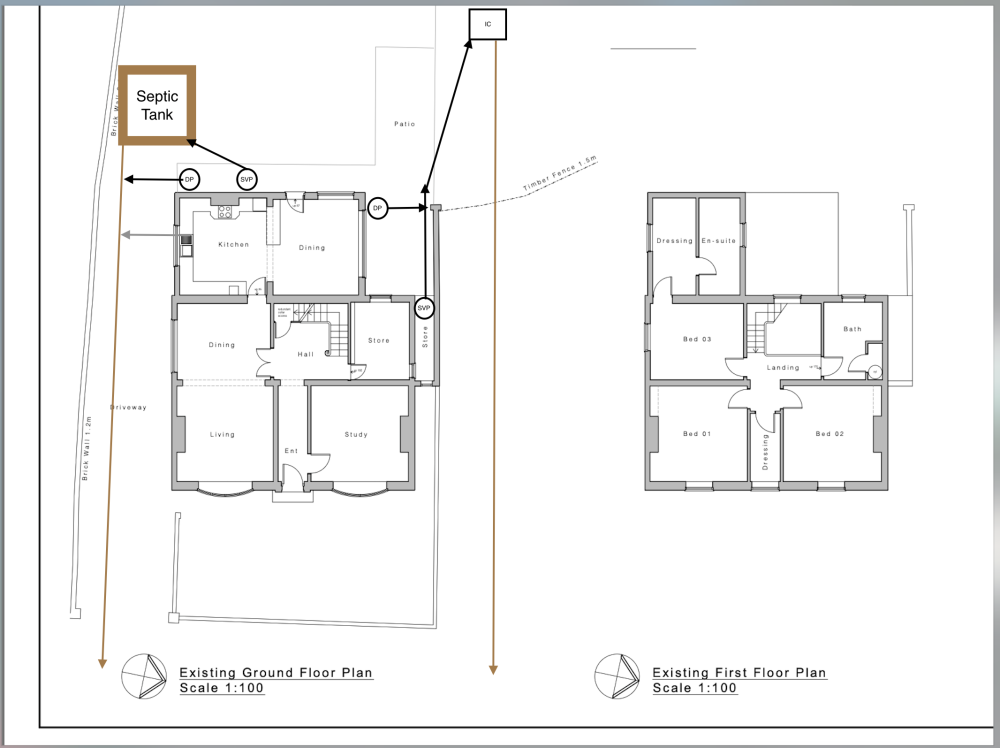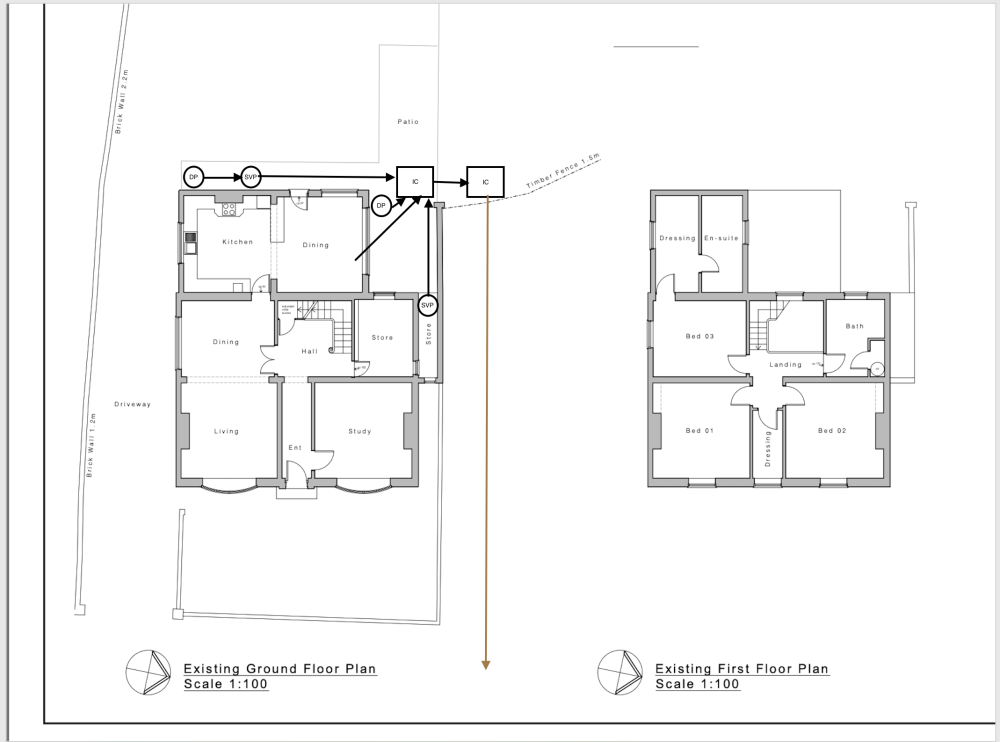
jayc89
Members-
Posts
1388 -
Joined
-
Last visited
-
Days Won
1
Everything posted by jayc89
-
Can hardly blame the surveyor, on this occasion. They can't see the battens because they're hidden by the foam so they have no idea what condition they're in. Although the same could be said for any insulation, foam is known to cause problems in some circumstances (typically when the roof's been leaking for a while, no one knows about it, because of the foam, and the water has had no where to go but into the battens and ultimately rot them) Whilst it's a slog of a job, removing it is DIYable. You should be able to pick large chunks off relatively easily and then use a wire brush to do the rest. I'd certainly give it a go if I could save £6,000!
-
I have a couple of these - https://www.bpcventilation.com/90mm-10-point-re-dis-box connected loosely at the minute but I want to tidy them up and, ideally, get them mounted to the wall (18mm ply) How do people typically do this? They're not particularly heavy, can I screw a batten beneath them (into the wall) to take the majority of the weight and glue a couple of angle brackets to the boxes to secure them?
-
Not helpful to the OP, but I don't understand the rationale behind spray foaming between the rafters. Putting the moisture risk to one side, a cold loft still needs ventilation, so unless you plug up the eaves (even worse idea) cold air will get behind the spray foam anyway?
-
Never used them before, so I'm purely guessing here, as they project further into the room, won't they have a wider swing and therefore foul the corner of the wall that protrudes out into the room;
-
Without having to butcher the door on the latch side to open/close it?
-
-
Good point, I did wonder what it would do to the swing. Argh. The other side's quite tight too, for approx the first 150mm so that sound like it would also be a PITA. I'll get some pictures up...
-
Door opens fine, just the skirting behind it would prevent it from opening any further than about half. Not sure how I could taper the skirting behind the door, as it would have to go down to next to nothing to open fully. I'm thinking some sort of projection hinge is the way to go. I think these - https://www.ebay.co.uk/itm/352753838756?epid=1961814675&hash=item5221c46aa4:g:xEsAAOSwEdRgwQNx&amdata=enc%3AAQAIAAABAHCan7AOE0bTuHL6dtM3Vz2jNSLe8K2HsUSaJPediZ8c7GEWp6SUme38z7jDl5IDjwQcEkCW0yDv3Z%2FVVa%2Fh0S8r7INWyVZ21At0CwZ1goV61QDLd5uROcDWe%2FCUjemejt093vwRK3r2cO2WeK1ukHgiomGCh0ooqcgZMlgRvUP5TpOQy3xaN7a17ldkrRnZqIpvXv%2F1cYb5JO4DgVRcPbBFSSXaroMPaIMa8ViotinwS2lZf2C6GHY6utXrtrfEY9G72bAURQ8TNk0hTP8S%2Bwtgb0cdxHACtZndtloOy5mQg74YTRxQjqfN3pG0z618NuWv4jSbhKVpSGlJrM3pphc%3D|tkp%3ABk9SR6ad_c6jYw - would give me an additional 25mm clearance which should be enough, I'd still have to plane the face of the skirting down as it meets the frame though.
-
They're quite chunky so would look out of place recessed across the full wall, I think. Could parliament hinges work? AFAIK, they'd pull the door further into the opening and away from the wall, right?
-
Was hoping to retain the original door (room was originally tiled, so not previously a problem). I suspect a bifold would stick out a fair bit into an already narrow opening?
-
We have a pretty small room with a narrow door and the door frame abuts the returning wall. No option to move the frame, as it's also at the foot of the stairs. No option to reduce the opening size, as it's already narrow (about 650mm). If I fit skirting to that returning wall, the door will only open about half way, so I need to do "something" else. I considered a thinner strip of wood on the returning wall, just behind the door and starting the skirting from the point the door reaches when it's open, but worried this will look cack. Has anyone seen similar setups finished well before?
-
A couple of my duct runs are too short, at the distribution box end. I plan on getting a couple of straight couplers, like these - https://www.paulheatrecovery.co.uk/product/connector-for-90mm-semi-rigid-ducting/ - should I use anything else when using these; an acrylic sealant within the sleeve and airtight tape externally?
-
Tiling over tiles, how can I tell if it's a sound surface?
jayc89 replied to Jayneo's topic in Floor Tiles & Tiling
May go into a bit of detail about the damp that was cured in the wall, same room/location? The only way to effectively treat damp is finding the source and fixing that, any damp prevention on the house itself will just move the problem elsewhere. You're typically looking for broken gutters/drain pipes etc. but depending on location and structure it could be driving rain, impermeable materials used (on older brickwork) etc.- 5 replies
-
- tile over tile
- damp substrate
-
(and 1 more)
Tagged with:
-
Shower tray - subfloor prep
jayc89 replied to crispy_wafer's topic in Bathrooms, Ensuites & Wetrooms
What's the dimensions of that shower area? Looks well! -
What's more important for comfort U value or 'thermal mass'
jayc89 replied to Gone West's topic in Boffin's Corner
I've been living in this minefield for the last couple of years having bought an 1850's house. A couple of points; - There's certainly something in "thermal mass" we have 2 rooms of similar size, both have 2x external walls, one room has 2x 220mm external walls, the other has 2x 330mm external walls (it's almost like a solid brick wall using cheap reds and then a single leaf facade of nicer cream bricks in front of it, and I haven't found anywhere it's tied in yet...) the room with the thicker walls was always the warmer of the two before any insulation. - Because of the external looks of the property, EWI was a no go for us, we couldn't hide the original brickwork. We opted for IWI, having spent months researching "breathable" solutions we couldn't justify either the cost of additional build up. For the most part we opted for PIR adhered direct to the existing lime plaster, mechanically fixed battens through it and PB finish, which BCO was happy about. We came to the conclusion that moisture does get into "traditional" brickwork and the best remedy is two-fold - fix the source of moisture; so ensure gutters, ground levels, etc are sound and if moisture gets in, it has to be able to get out again, so at least one side of the wall needs to be permeable; so lime mortar/render on the exterior, no cement. 2 years in and it's worked well for us, we did have a damp patch showing on an external wall last year which was caused by a cracked drain near it, we fixed that and the damp patch is slowly going away again, so the logic we built to, seems, to hold... There are so many horror stories out there, but they come without full context. We were pretty OCD about foaming and taping all gaps, to avoid condensation, we also have MVHR so internal humidity should be managed well, both of which likely contribute to our (early) success. -
Solid brick and impermeable materials on both sides of it. I'm afraid you're asking for trouble. Moisture's getting in and it has no where to go. At least one side of that wall has to be able to "breathe". Replace the external render, or the internal plaster, with a lime based alternative. Avoid NHLs, especially NHL5, as they typically cure harder than cement over time.
-
I did consider it, but given the state the pipe end came out in, and the fact these will be buried out of sight when I’m done, for peace of mind I just stuck a new one on instead.
-
I had to re-route a couple of pipes last night, each run had a couple of elbows which I needed to demount and reattach later, a couple of them were real PITA's to demount, the sleeve stuck in the elbow and the end of the pipes were chewed to buggery. I replaced the elbows and cut off the chewed ends when refitting so not the end of the world, but I would like to know what I did wrong to avoid it happening again. Can this sometimes happen? didn't I have the demount tool on properly? I tried multiple times before using brute force to get the buggers off....
-
I have a Grundfos UPM3 and it's just running on the lowest setting. Aiming for a delta of 7c.
-
I balanced mine by measuring the flow/return temps on each loop. For mine, the flow rates provided by the supplier were out of whack to what made the most sense in reality; some ran too hot, some too cold.
-
It's a good idea. The reason why I don't think I should do it is, the end of our road floods whenever we get a reasonable amount of rain (doesn't need to be a downpour), this doesn't affect our mains sewerage drain, so I'm assuming it's the water culvert backing up. Trying to push all our rainwater through it too will likely only make things worse and with us having an 1850's property, that are more susceptible to damp, I really don't want to risk surface water pooling around the perimeter of the house. Perhaps the septic tank would act as some sort of buffer to this, but with the extremes we're starting to see, and will likely continue to see, it's a complexity I don't think I need right now.
-
I should have been clearer - we currently have a mix of septic tank AND mains waste - no idea why because the extension uses the septic tank whereas the original part of the house is on mains waste !? My plan is to do away with the septic tank altogether, fill it in, and only use the mixed mains waste drain, which is what the existing IC connects to.
-
Old house, shared mains rain/foul drainage. For some reason we also have an old septic tank added to the mix which discharges to a water culvert. All clay pipes, some of which have cracked so I need to start digging. Currently looks something like this; My plan is to make it look something like this; (We're moving the kitchen to where the "dinning" currently is, including a new floor slab, so will run a 110mm pipe for dishwasher and sink waste, which will connect into that nearest IC.) Does the plan look sensible? As it's a shared drain, I'll include traps on the rain water downpipes to avoid any smells. Do I need a couple of rodding points at each end of the runs; one before the downpipe nearest the drive and one before the SVP in the "Store"?
-
Should be ideally be run deeper, below your slab. Looks like the base of the stack also needs a rest bend, as the weight of the stack is sitting on that elbow currently. Cut your PIR around the pipe and foam the gaps?





